10-Step Affiliate Program Checklist for Beginners
Are you thinking about launching an affiliate program for your business but don’t know about where to start? An affiliate program checklist might come handy.
Many businesses know that affiliate marketing can be a powerful growth engine, but getting started the right way is critically important. After all, it’s an extension of your brand.
In this article, we’ll walk you through our complete 10-step affiliate program checklist that will help you launch your program with confidence. So read this guide, until the end.
Why an Affiliate Program Matters
Affiliate marketing is one of the most cost-effective options for running a successful business today. Works on a performance basis where you only pay when you get results.
When an affiliate brings you a sale, you share the revenue with them. This means your marketing budget goes directly to results, not just impressions or clicks.
Imagine this. You’re selling a $100 product with a 20% commission, you’re only paying $20 after you’ve already earned $100, a risk-free approach to scaling your sales.
Affiliate programs help you reach established audiences who trust your favorite content creators, bloggers, and experts. They have built relationships with their followers for years.
When they recommend your product, it comes with built-in credibility that is difficult to achieve through traditional advertising.
Most importantly, a well-planned affiliate program helps your business grow over time. Once you have built relationships with quality affiliates and provided them with the right tools and incentives, they become ongoing partners in your business.
This creates a reliable revenue stream that can grow significantly.
The Complete Affiliate Program Checklist
1. Define Your Customer Profiles
To create a successful affiliate program, you need to know who your ideal customer is. If you know who buys your products, you can hire affiliates who connect with these same audiences.
For example, if you sell project management software to small business owners, you’ll want to partner with affiliates who have credibility with that audience.
Keep track of your customer demographics, pain points, and buying behaviors. The insight helps you identify affiliates who share your target market.
2. Research Competitors’ Affiliate Programs
Study how successful affiliate programs in your industry operate to understand what works.
Look at their commission rates, payment terms, and promotional resources.
For example, companies like WPEngine pay up to $200 in commissions, while companies like Kinsta pay up to $500. If you were a hosting provider, you would want to compete with their commission structure. Here’s where competitor analysis helps.
Check out your competitor’s affiliate program pages to see what marketing materials they offer. Do they provide banners, email swipe copy, or product comparison charts?
These insights help you build a competitive program that attracts quality affiliates.
3. Choose The Right Affiliate Management Tool
Your program success will highly depend on two things: the research you do and the affiliate management tool you use.
For WordPress, we highly recommend using AffiliateWP, the best affiliate management WordPress plugin.
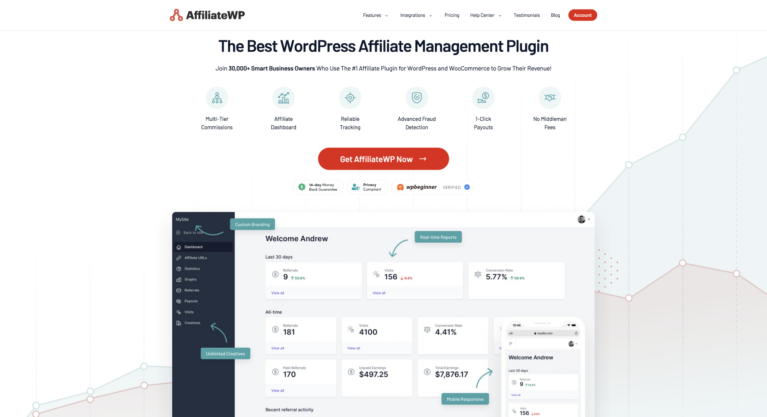
The Pro plan includes unlimited affiliates, popular integrations, and advanced features like AI affiliate review, fraud prevention, and multi-tier commissions to create an MLM-style affiliate network.
Everything comes with a 14-day money-back guarantee.
4. Set Realistic Goals
Start with clear, measurable goals for your affiliate program’s first 90 days. Focus on key metrics like recruiting 10 active affiliates, generating 100 referral visits, or achieving 5 sales through affiliates.
These benchmarks help you track progress and adjust your strategy as needed.
For example, if you’re selling a $197 course and want to generate $5,000 in monthly affiliate sales, you’ll need about 25 sales from your affiliates. So do not set unrealistic goals. Most of the time, it backfires, and you might lose more money than you make.
5. Choose the Right Commission Model
Your commission structure directly impacts affiliate motivation and program success. With AffiliateWP, you can offer two main commission types:
Percentage-based commissions calculate a portion of the sale value. For example, offering 20% commission on a $100 product means affiliates earn $20 per sale. This structure works well for digital products and high-margin items.
Flat-rate commissions provide a fixed amount regardless of the sale price. You can structure these two ways:
- Per product sold: Affiliates earn the set amount for each item (e.g., $5 per product, even in multi-product orders)
- Per order: Affiliates earn one commission per complete order, regardless of items purchased
Choose the model that aligns with your profit margins and industry standards.
For example, digital product creators often offer higher percentage-based commissions (30-50%), while physical product companies typically use lower percentages or flat rates.
6. Draft Payment Terms and Agreements
Your affiliate terms and conditions protect both your business and your affiliates. The easiest way to create these is with AffiliateWP’s Terms of Use Generator.
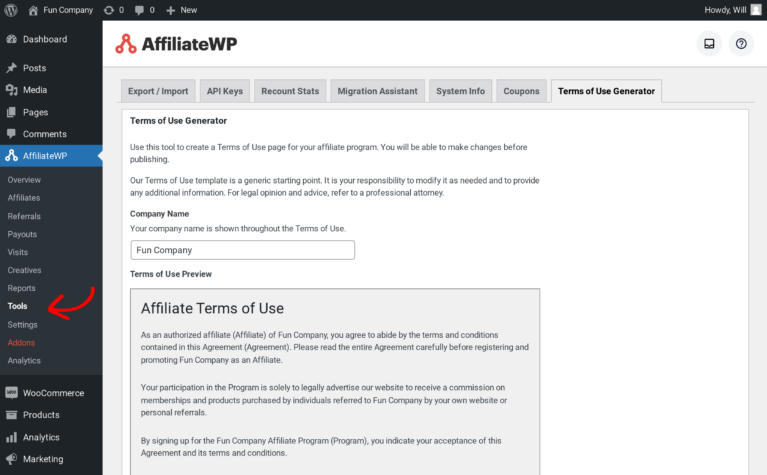
Simply go to Tools in your WordPress dashboard, select the Terms of Use Generator tab, and enter your company name.
The generator will create a comprehensive agreement that covers commission structures, payment schedules, and promotional guidelines.
7. Prepare Affiliate Assets
Create high-converting marketing materials your affiliates can use to promote your products.
With AffiliateWP, you can organize these assets directly in your affiliate dashboard:

- Upload banners and images with specific landing page links
- Provide email swipe copy and promotional text
- Create categories to organize creatives by campaign or product
- Add detailed descriptions for each creative to guide proper usage
Your affiliates can access all these materials directly from their affiliate dashboard, making it easy for them to start promoting right away.
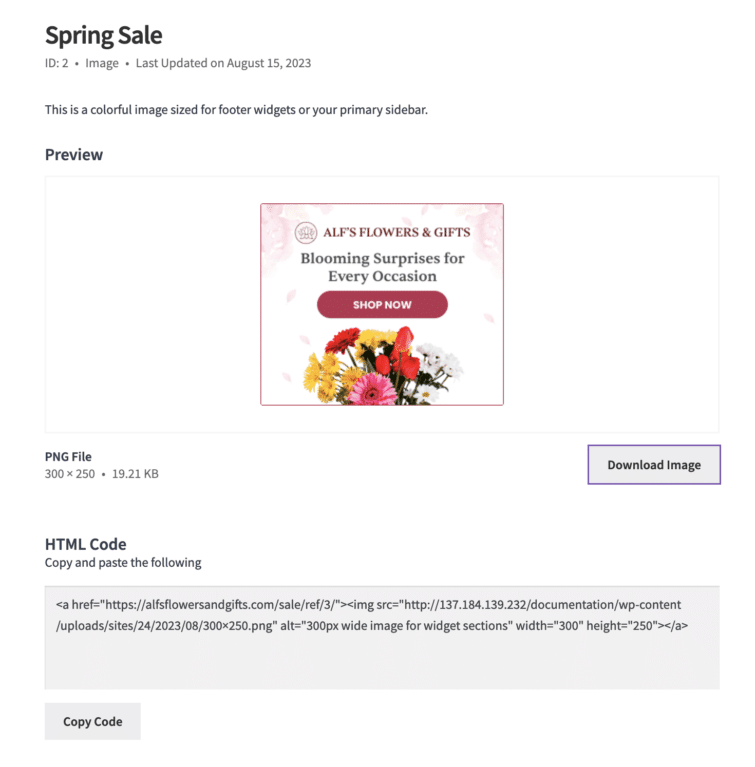
8. Recruit and Onboard Affiliates
Make it simple for potential affiliates to join your program. AffiliateWP automatically creates an Affiliate Area page where affiliates can sign up and access their accounts.
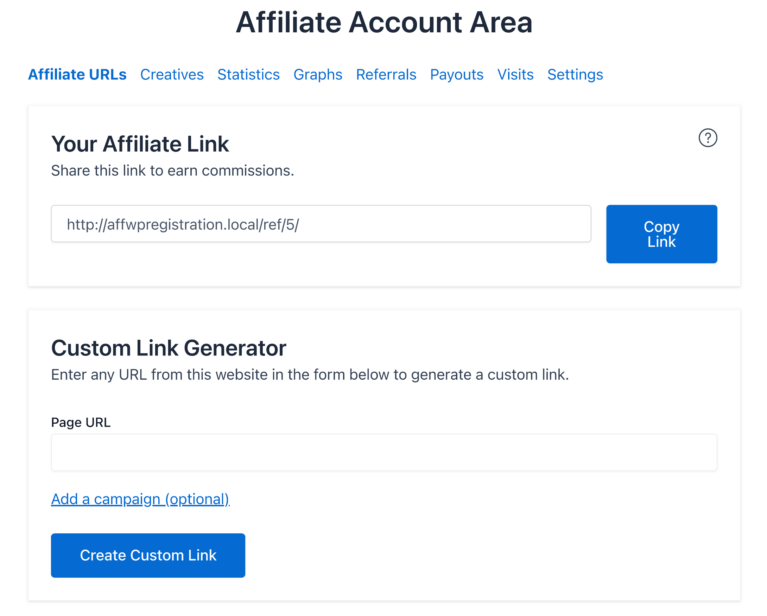
This page serves as your program’s hub, providing affiliates with:
- A simplified registration process
- Secure login to their affiliate dashboard
- Access to affiliate links and tracking stats
- Marketing materials and promotional content
- Commission reports and payment history
Consider starting with a small group of committed affiliates who understand your product and can provide quality referrals. This allows you to refine your processes before scaling up recruitment efforts.
9. Provide Ongoing Support
Keep your affiliates motivated and informed with consistent communication.
Send monthly newsletters highlighting your best-performing affiliates and sharing successful promotional strategies. Host quarterly webinars to demonstrate new products or features and address common questions.
Create tiered rewards programs to encourage higher performance. For example, offer bonus commissions when affiliates reach specific sales targets, or run seasonal contests with prizes for top performers.
Remember, engaged affiliates are more likely to actively promote your products.
10. Track and Optimize Performance
Monitor your program’s success using AffiliateWP’s comprehensive reporting system.
Access detailed metrics for each affiliate, including:
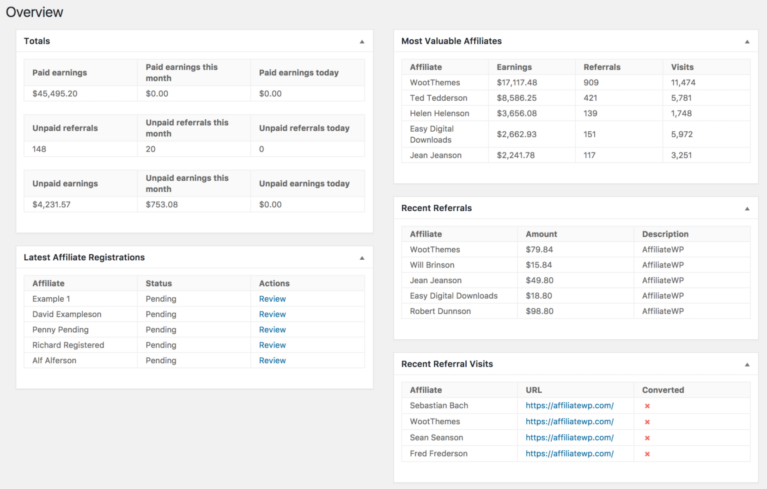
- Total earnings and unpaid earnings
- Number of referrals (paid, unpaid, pending, and rejected)
- Visitor count and conversion rates
- Sales performance data
For supported platforms like WooCommerce and Easy Digital Downloads, use the Sales tab to track key metrics such as:
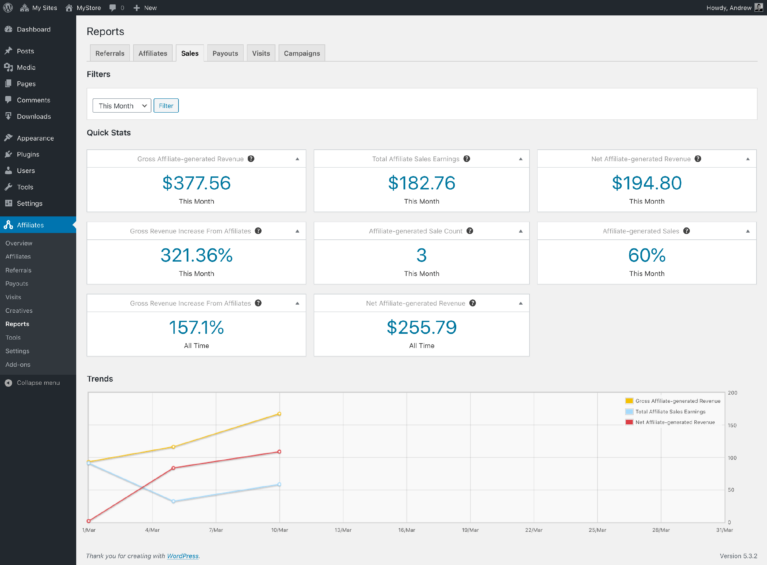
- Gross and net affiliate-generated revenue
- Revenue increase from affiliate sales
- Percentage of sales from affiliates
- Total affiliate earnings
Use these insights to identify your top performers, understand which promotional strategies work best, and make data-driven decisions to improve your program’s effectiveness.
Start Your Affiliate Program Today
Start Your Affiliate Program Today
An affiliate program is one of the smartest investments you can make in your business’s growth. The 10-step checklist we’ve covered today gives you a clear roadmap to launch your program with confidence.
Ready to launch your affiliate program? Here are some valuable resources to help you get started:
By following this checklist, you’re well on your way to building a powerful new revenue channel for your business.
So, take the first step today.

